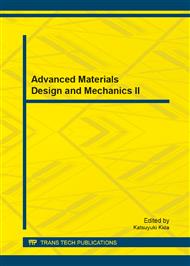p.360
p.364
p.369
p.373
p.377
p.381
p.387
p.392
p.398
Integrated Dexels Geometric Model and Predictive Force Model for Feedrate Optimization in 03 Axis Milling Machine
Abstract:
Machining of sculptured surfaces engender abrupt variations in cutting forces, excessive tool deflections and undesirable vibrations and therefore poor surface finish. To reduce these problems and to have a stable machining it is more indispensable to select the appropriate cutting conditions. The aim of this paper is to propose an approach for determining the optimum feedrates along tool path during finishing of sculptured surfaces with ball end tools on 03-axis CNC milling machines using a predictive mechanistic model of cutting forces. Its steps are :1) approximation of the workpiece geometric model by dexels, 2) localization of the contact zones between tools and workpiece using machining simulation, 3) prediction of the cutting forces, 4) optimization of the feedrates and 5) updating of the machining program « G-Code ».
Info:
Periodical:
Pages:
377-380
Citation:
Online since:
August 2013
Authors:
Price:
Сopyright:
© 2013 Trans Tech Publications Ltd. All Rights Reserved
Share:
Citation:


